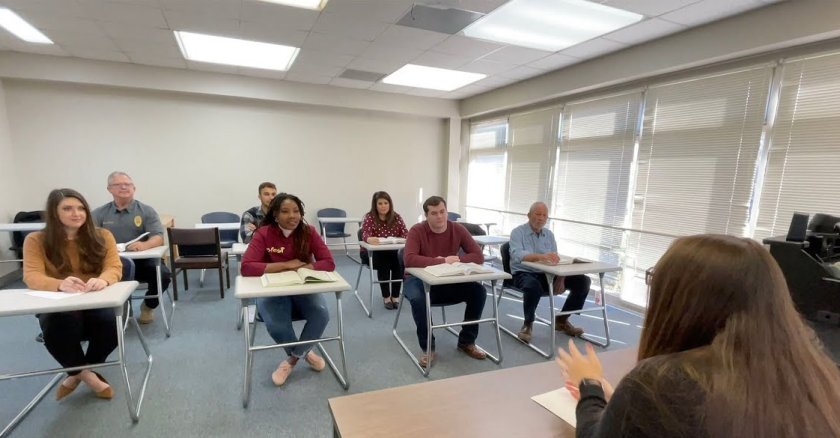These investments are not an indication of newfound climate concerns on the part of Georgia officials. The driver for attracting the Hyundai and Rivian plants was a simpler one, rooted more in local, immediate economic needs: Combined, the projects are projected to bring more than 15,500 jobs to the state.
The green economy is projected to create an estimated 9 million new U.S. jobs over the next decade. Yet this is a drop in the bucket compared to the overall number of jobs that will require green skills, roles and responsibilities across a range of occupations and industries. This demand is outpacing the number of workers who are prepared to fill these jobs. But with many of these roles not requiring a college degree, there is immense opportunity for creating a more equitable workforce.
Here are four ways to ensure that all workers can benefit from the country’s shift to a green economy:
Create opportunities for worker exposure and exploration. Today’s green economy consists of many burgeoning industries, such as those focused on renewable energy. Workers not only lack the skills to fill many of the jobs being created but also lack awareness of which jobs exist and which training and education pathways they should consider. Savvy regional and state leaders are recognizing that workers need opportunities and training to explore these careers.
The city of Denver, for example, partnered with the talent analytics platform Juliusto expose close to 1,000 Denver job-seekers to energy-efficiency careers since last year. Julius, whose impact goes far beyond the Denver partnership, uses artificial intelligence to sift through mountains of labor market data related to the green economy and build detailed profiles of available jobs and their related skills. Those profiles help workers better understand what roles are out there, which skills they already possess that could help them pivot careers and how to find training that can help them develop new skills that lead to new opportunities.
Connect workers to training and workforce development programs. The prevalence of green jobs that do not require an associate’s or bachelor’s degree means that regional and state leaders can build a workforce training ecosystem. These kinds of programs remain few and far between, and there is a need to find ways to greatly scale their reach. Regions and states can work together to create “talent marketplaces” that allow employers in search of skilled workers to subsidize such programs and help build the talent pipelines they will draw from.
The Louisiana Green Corps, for instance, provides training programs to job-seekers in the greater New Orleans area. The programs offer general career readiness preparation as well as skills training specific to green industries. They also connect workers to paid internships and on-the-job training with partner organizations. Those who participate in the programs can pursue careers in construction, stormwater management, energy efficiency, solar installation and weatherization.
Target training efforts for workers. In a sad but not surprising irony, research shows that members of the populations disproportionately affected by climate change — including Black and Latino workers, people from low-income backgrounds and residents of rural communities — are also underrepresented in the green workforce. To ensure the workers who stand to benefit the most from these economic opportunities are not excluded, regions and states should place equity at the center of the training initiatives they invest in.
Texas-based Interplay Learning, for example, is partnering with community colleges to create online virtual reality training that allows workers in rural communities to access low-cost, hands-on education in fields like solar energy. And through its partnership with New York City, the training provider BlocPower focuses on Black and brown workers from low-income communities and neighborhoods most affected by gun violence. With a waitlist of 600 people, the program is demonstrating just how quickly demand is growing for these kinds of trainings and the importance of expanding access.
Augment training with complementary services. Ensuring that disadvantaged workers can complete programs and transition into new careers will also require investments in wraparound services and resources. A lack of reliable transportation or child care can create insurmountable barriers that will stymie any efforts to create an equitable green workforce. If workers are struggling to have their basic needs met during their training, they are far less likely to succeed.
Fortunately, several providers are now offering this kind of support alongside their training programs. The Green Door Initiative in Detroit offers literacy support and budgeting, time management and personal finance training. Portland, Ore.’s PGE Project Zero covers participants’ Uber rides. The Los Angeles Cleantech Incubator helps its participants who are experiencing housing insecurity find lodging.
The move to a green economy is well underway. Like any industrial shift, there stand to be people who benefit and those who don’t. Addressing the many factors that impact a worker’s ability to pursue and complete training for the jobs created by this burgeoning economy will require significant public investments. But by making these investments now, policymakers and business leaders can build a green workforce that leaves no worker behind.
Taj Ahmad Eldridge is the director of climate innovation at JFFLabs, the innovation laboratory of Jobs for the Future, and the author of a new market scan that looks at the programs specifically designed to train new and incumbent workers for green jobs. JFF, a national nonprofit, works with corporations, entrepreneurs and institutions to spur transformation of workforce and education systems to create economic advancement opportunities.
Governing’s opinion columns reflect the views of their authors and not necessarily those of Governing’s editors or management.
Related Articles













